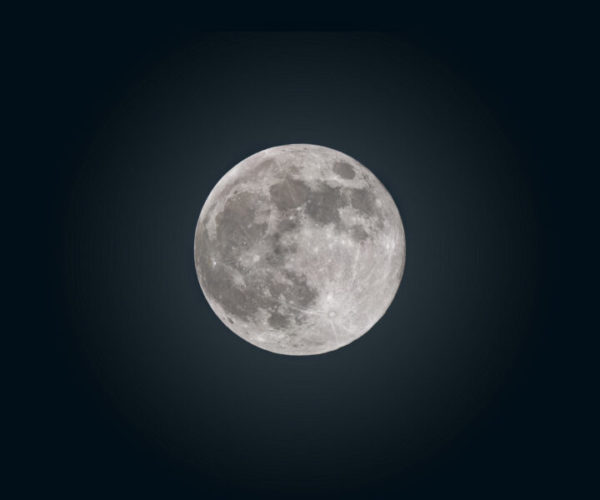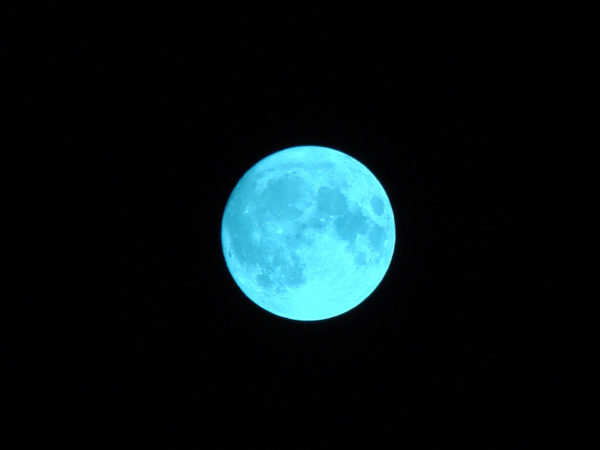Once a Blue Moon…and on Halloween
The following item was issued by Sky & Telescope magazine in Cambridge, Massachusetts, Sky & Telescope is part of the American Astronomical Society.
* * *
As twilight descends on All Hallows’ Eve, a full Moon will rise in the eastern sky for the second time this month (the first time was on October 1st). And though it will appear as brilliantly white as usual, many will call it a “Blue Moon.”
In modern usage, “Blue Moon” has come to refer to the second full Moon in a month — but that hasn’t always been the case. “This colorful term is actually a calendrical goof that worked its way into the pages of Sky & Telescope back in March 1946,” explains Diana Hannikainen, Sky & Telescope’s Observing Editor. “It spread to the world from there.”
Historically, the term “Blue Moon” was more often not an astronomical term: In older songs it’s used as a symbol of sadness or loneliness, while “once in a blue Moon” means a rare event. Only exceedingly rarely does the Moon actually turn blue in our sky — when volcanic eruptions or forest fires send lots of smoke and fine dust into the atmosphere.
Editors and contributors to Sky & Telescope have traced the traditional astronomical definition to the Maine Farmers’ Almanac in the late 1930s. The Almanac consistently used the term to refer to the third full Moon in a season containing four of them (rather than the usual three). But in 1946, amateur astronomer and frequent contributor to Sky & Telescope James Hugh Pruett (1886–1955) incorrectly interpreted the Almanac’s description, and the second-full-Moon-in-one-month usage was born.
Sky & Telescope admitted to its “Blue Moon blooper” in its May 1999 issue. Canadian folklorist Philip Hiscock and Texas astronomer Donald W. Olson worked with the magazine’s editors at the time to figure out the origin of the mistake, and how the two-full-Moons-in-a-month meaning spread into the English language.
By either definition, Blue Moons are still rare. They happen about once every 2.7 years on average. Using the newer definition, we’ll have to wait until August 2023 for the next Blue Moon after this one.
As far as Blue Moons on Halloween, they occur roughly roughly every 19 years. There are exceptions- like when the times between full moons (29.53 days) does not line up with the calendar days.
As far as Blue Moon for all U.S. timezones, this is the first time for it to occur since 1944. We have seen Blue Moons on Halloween more recently than 1944; 1955 and 2001 are the most recent years the Moon was full for the second time that month on Halloween. However, in 1955 it happened for the Eastern & Central time zones (but not Mountain, Pacific, and west) and on 2001 the moon was full on Halloween in the Central time zone west, but not Eastern.
The next time the blue moon will be on Halloween will be in the year 2039. By the way, moon rise in Birmingham this evening is a 5:47 PM CDT…
Category: ALL POSTS, Partner News Stories

















